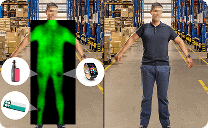In This article
In the 1980 comedy classic Airplane!, one of the pilots famously asks, “What’s my vector, Victor?”—a line that’s become a pop culture staple for its absurdity and timing. But in the world of generative AI, that question is surprisingly profound. Vectors are at the heart of how generative models understand, manipulate, and create data. So, buckle up, because we’re about to taxi down the runway into the fascinating world of vectors in generative AI.
What Is a Vector, Anyway?
In mathematics and computer science, a vector is simply an ordered list of numbers. Think of it as a point in space, where each number represents a dimension. For example, a 3D vector like [2, -1, 5] can represent a location in three-dimensional space.
In AI, especially in machine learning and deep learning, vectors are used to represent all kinds of data—words, images, sounds, and even entire documents. These representations are known as embeddings, and they allow machines to understand and manipulate complex data in a structured, numerical way.
Why Vectors Matter in Generative AI
Generative AI models—like GPT, DALL·E, and Stable Diffusion—don’t just memorize data. They learn patterns and relationships by converting data into vectors. These vectors live in what’s called a latent space, a kind of abstract, high-dimensional space where similar concepts are grouped together.
Here’s why vectors are so important:
-
Similarity: Vectors allow AI to measure how similar two pieces of data are. For example, the words “king” and “queen” might be close together in vector space, while “king” and “banana” are far apart.
-
Interpolation: Generative models can blend between vectors to create new content. Want an image that’s halfway between a cat and a dog? The model can interpolate between their vectors.
-
Manipulation: You can perform arithmetic on vectors to generate new meanings. For example: vector(“king”) – vector(“man”) + vector(“woman”) ≈ vector(“queen”).
Vectors in Text Generation
Let’s start with language models like GPT. When you type a sentence, the model converts each word into a vector using an embedding layer. The vectors represent the meaning and context of each word. The model then processes these vectors through layers of neural networks to predict the next word, one token at a time.
The beauty of this approach is that it allows the model to understand nuances like tone, grammar, and even humor. It’s how a model can write a Shakespearean sonnet or a sarcastic tweet—because it’s navigating a rich vector space of language.
Vectors in Image Generation
In models like DALL·E or Stable Diffusion, vectors represent visual concepts. A prompt like “a futuristic city at sunset” is converted into a vector that captures the essence of that idea. The model then generates an image by decoding that vector through a neural network trained on millions of images.
What’s fascinating is that you can manipulate these vectors to control the output. Want the same city but in winter? Adjust the vector. Want it in the style of Van Gogh? Add a style vector. This is where the power of generative AI really shines—by treating creativity as a navigable space.
Vector Databases and Retrieval-Augmented Generation (RAG)
As generative AI becomes more integrated into real-world applications, vector databases are playing a crucial role. These databases store embeddings of documents, images, or other data, allowing for fast and accurate retrieval based on similarity.
In retrieval-augmented generation (RAG), a model first retrieves relevant information from a vector database before generating a response. This makes the output more accurate and grounded in real data. For example, a customer support chatbot might use RAG to pull up relevant policy documents before answering a question.
Challenges and Considerations
While vectors are powerful, they’re not perfect. Some challenges include:
-
Dimensionality: High-dimensional vectors can be computationally expensive to store and search.
-
Bias: If the training data is biased, the vectors will reflect those biases.
-
Interpretability: It’s often hard to understand what a specific vector means in human terms.
Researchers are actively working on ways to make vector spaces more interpretable and fairer, ensuring that generative AI is both powerful and responsible.
So… What’s My Vector, Victor?
In the world of generative AI, that question isn’t just a punchline—it’s a fundamental query.
Your “vector” is your position in a vast, multidimensional space of meaning, creativity, and possibility. Whether you’re generating text, images, or music, vectors are the coordinates that guide the journey.
So next time you interact with a generative AI—whether it’s writing a poem, designing a logo, or answering a question—remember that behind the scenes, it’s all about vectors. And somewhere, a digital co-pilot is asking, “What’s my vector, Victor?”
Interested in Learning More about Vectors?
All You Need to Know about Vector Databases and How to Use Them to Augment Your LLM Apps. Towards Data Science. Available here.
Talk to AI Experts
DTiQ has pioneered the use of AI to deliver remarkable solutions that measure drive-thru speed of service, store entry counts, and in-store wait times. Our customers use these solutions to improve operational efficiency, enhance guest experience, and optimize profitability. Schedule a demo to learn more.























